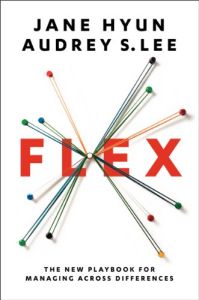Melden Sie sich bei getAbstract an, um die Zusammenfassung zu erhalten.

Melden Sie sich bei getAbstract an, um die Zusammenfassung zu erhalten.
Jane Hyun and Audrey S. Lee
Flex
The New Playbook for Managing Across Differences
HarperBusiness, 2014
Was ist drin?
Adapt or “flex” your communication style to reach different groups of employees.
Recommendation
The topic of diversity makes many managers uncomfortable: Men hesitate to talk to women. Baby boomer managers sometimes can’t relate to tech-knowledgeable, independent generation Y. The assertiveness of Western culture can be a problem for employees from other cultures. Authors Jane Hyun and Audrey S. Lee believe people should acknowledge and embrace their differences. They show leaders how to “flex” or adapt their communications, and how to understand status differences or “power gaps.” They emphasize ways to close power gaps between people of different genders, cultures and ages. getAbstract recommends their approach to HR professionals, department heads and line managers, especially those with a diverse workforce.
Summary
About the Authors
Jane Hyun, author of Breaking the Bamboo Ceiling, is an executive coach and global leadership strategist to Fortune 500 companies. Audrey S. Lee is a global leadership strategist and executive coach, working with with Fortune 500 companies, universities and nonprofit organizations.




















Comment on this summary